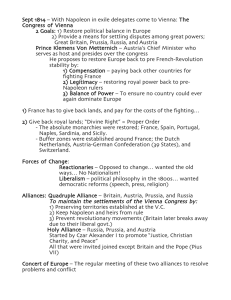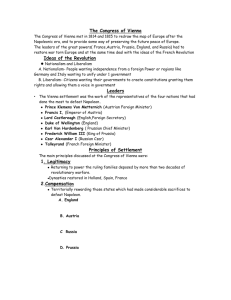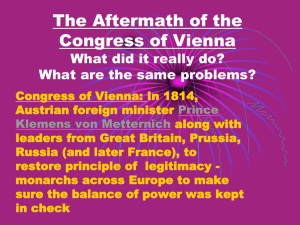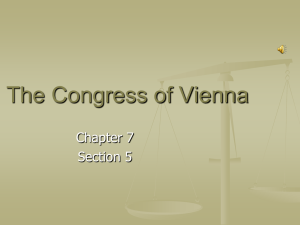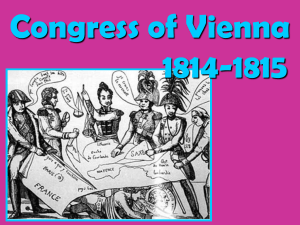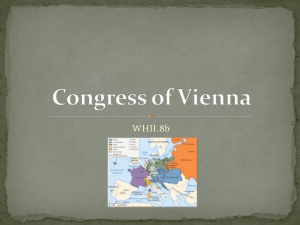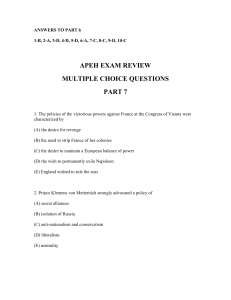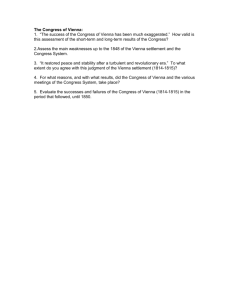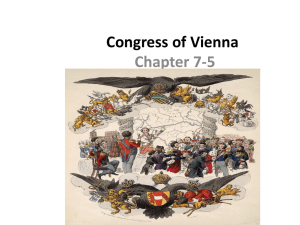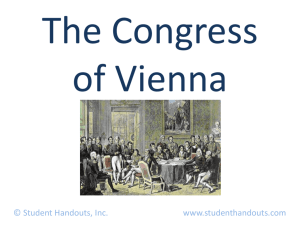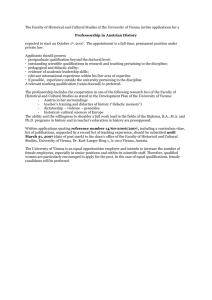Meeting 9
advertisement
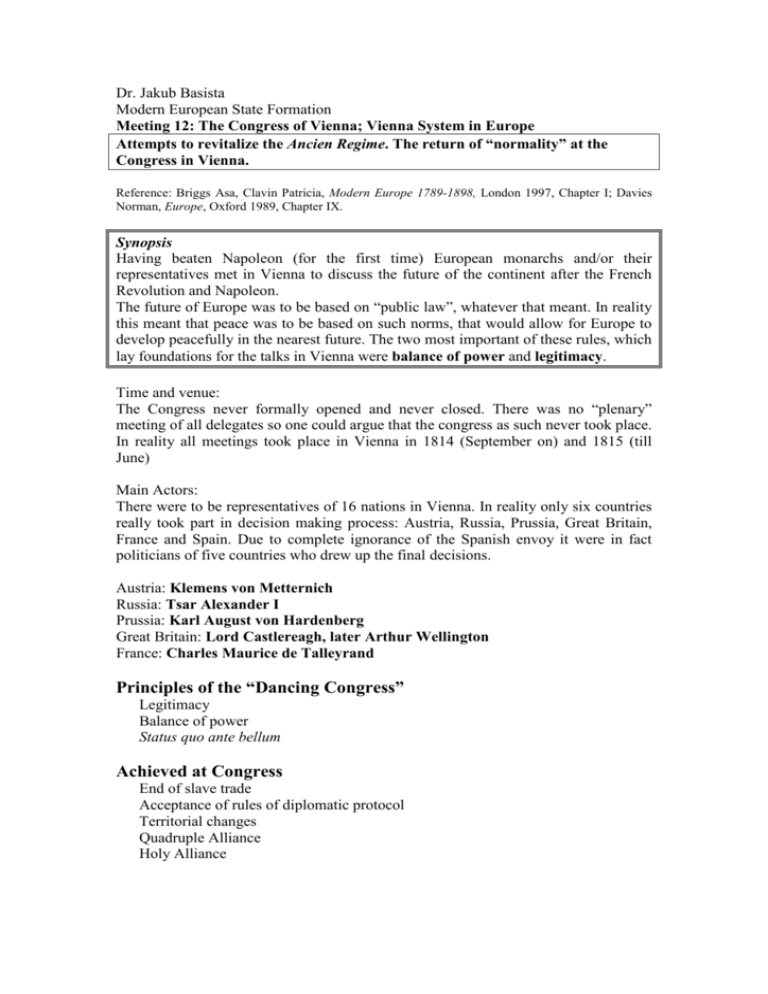
Dr. Jakub Basista Modern European State Formation Meeting 12: The Congress of Vienna; Vienna System in Europe Attempts to revitalize the Ancien Regime. The return of “normality” at the Congress in Vienna. Reference: Briggs Asa, Clavin Patricia, Modern Europe 1789-1898, London 1997, Chapter I; Davies Norman, Europe, Oxford 1989, Chapter IX. Synopsis Having beaten Napoleon (for the first time) European monarchs and/or their representatives met in Vienna to discuss the future of the continent after the French Revolution and Napoleon. The future of Europe was to be based on “public law”, whatever that meant. In reality this meant that peace was to be based on such norms, that would allow for Europe to develop peacefully in the nearest future. The two most important of these rules, which lay foundations for the talks in Vienna were balance of power and legitimacy. Time and venue: The Congress never formally opened and never closed. There was no “plenary” meeting of all delegates so one could argue that the congress as such never took place. In reality all meetings took place in Vienna in 1814 (September on) and 1815 (till June) Main Actors: There were to be representatives of 16 nations in Vienna. In reality only six countries really took part in decision making process: Austria, Russia, Prussia, Great Britain, France and Spain. Due to complete ignorance of the Spanish envoy it were in fact politicians of five countries who drew up the final decisions. Austria: Klemens von Metternich Russia: Tsar Alexander I Prussia: Karl August von Hardenberg Great Britain: Lord Castlereagh, later Arthur Wellington France: Charles Maurice de Talleyrand Principles of the “Dancing Congress” Legitimacy Balance of power Status quo ante bellum Achieved at Congress End of slave trade Acceptance of rules of diplomatic protocol Territorial changes Quadruple Alliance Holy Alliance Congress System 1815 - Quadruple Alliance (Russia, Austria, Prussia, G.Britain) 1818 - Quintuple Alliance (as above France) 1815 - Holy Alliance signed on 2 September 1815 in Paris (Alexander I, Francis I, Frederick William III) http://www.shsu.edu/~his_ncp/Alliance.html 20 November 1815 second peace of Paris 1815 - Vienna 1818 - Aix-la-Chapelle (France accepted to the group) 1820 - Troppau 1821 - Laibach 1822 - Werona • Political decisions • Territorial decisions • Alliances • Legacy of the Congress of Vienna and the French Revolution & Napoleon The Congress of Vienna made an attempt to turn the clock back. Any attempt to emancipate any group of people in Europe was to be controlled and overcome by the members of the Holy Alliance. In reality more than often various groups of peoples, politicians seek to improve their lives putting forth demands for a constitution and control of the feudal/absolute monarchy. These demands and demonstrations were inspired by four main ideas: • The sovereignty of the people • The idea of citizens’ rights • The notion of a written constitution • The idea of division of power in the state • FRANCE: France was reduced territorially to the borders of 1792. The French ruling family was reinstalled on the throne in the person of Louis XVIII. A new constitutional charter was issued on 4 June 1814. GERMAN STATES: A Confederation of German states was formed of 38 states and four free cities. With the exception of Austria and Prussia these states had territories inside the Confederation. The Confederation has legislative authority in the form of Bundestag and Bundesrat. Each German state has considerable autonomy and freedom in domestic affairs. International affairs were to be negotiated and regulated by the Confederation. ITALY: Italian States returned to their “rightful” rulers. The majority of Italy was controlled by the Habsburgs. Only isolated states retained the changes introduced by Napoleon. POLAND: Poland remained partitioned between Russia, Prussia and Austria, although borders have been shifted. Russian Emperor created a semi autonomous Polish state within the borders of Russia with a “liberal” constitution. The Quintuple Alliance and the Holy Alliance are formed to control the situation in Europe. Great Britain stands on the side as an observer ready to intervene should “the balance of power” be shaken.
